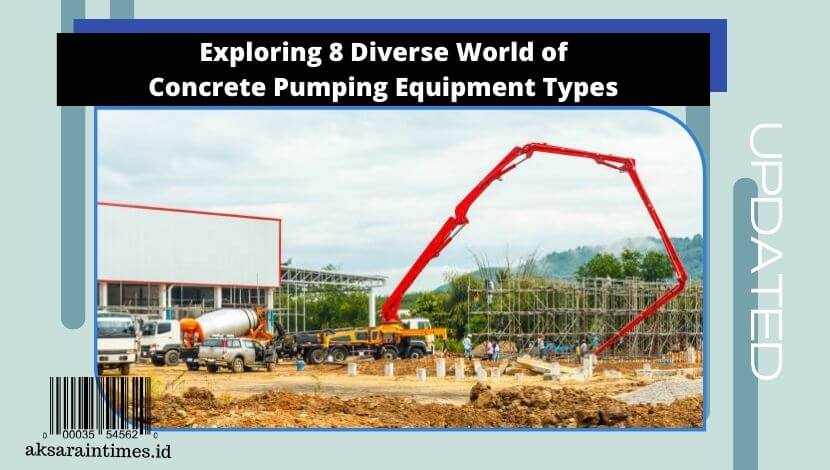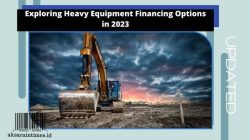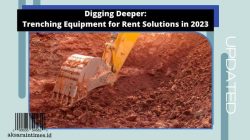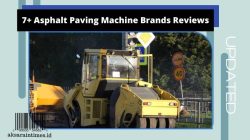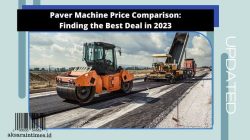Concrete Pumping Equipment Types – Concrete pumping is an essential component of modern construction, enabling the efficient and precise placement of concrete in a variety of structures.
It has revolutionized the way we build, allowing for faster construction timelines and improved project outcomes.
One of the key factors in the success of concrete pumping is the wide range of equipment types available.
These diverse machines cater to different project requirements, offering unique advantages and capabilities.
In this comprehensive exploration, we will delve into the fascinating world of concrete pumping equipment types, examining their variations, applications, and the role they play in the construction industry.
Concrete Pumping Equipment Types
Here are some Concrete Pumping Equipment Types, you need to know:
Concrete Pump Basics
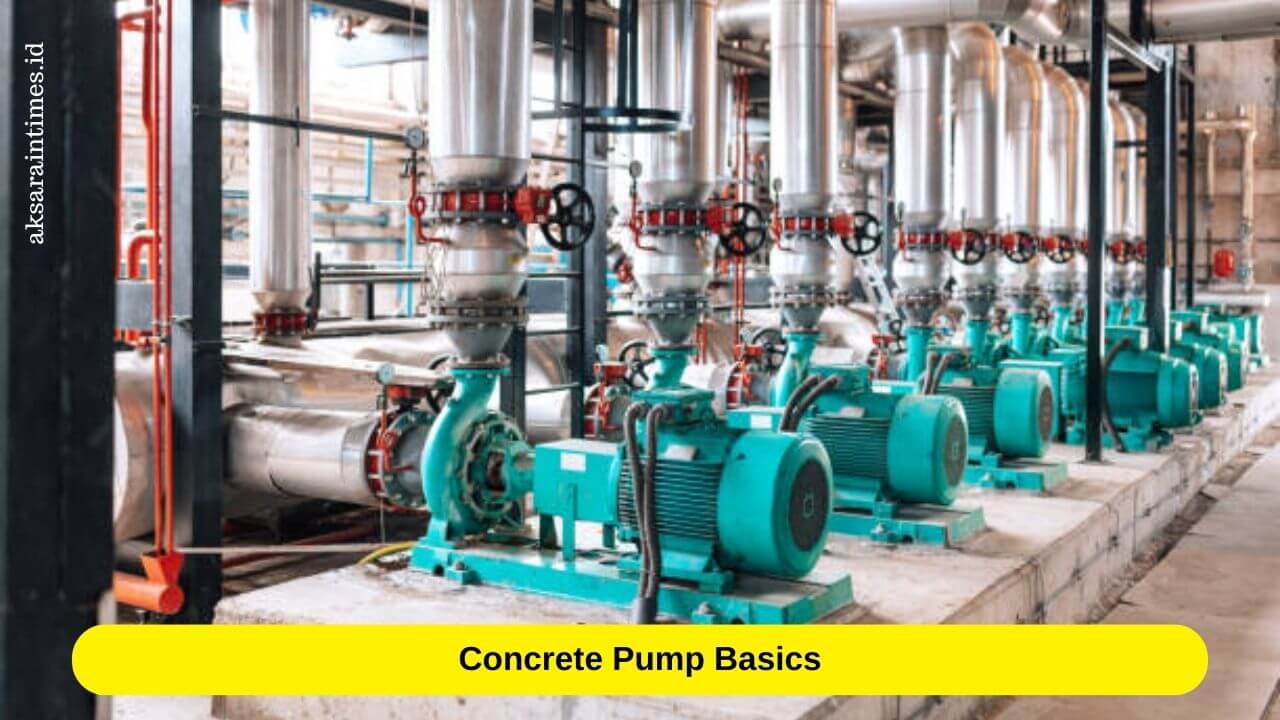
Before diving into the various types of concrete pumping equipment, it’s crucial to understand the fundamental principles of concrete pumping.
At its core, concrete pumping is the process of transferring liquid concrete from a source to its final destination.
This is typically done through a combination of pipes, hoses, and high-pressure pumps.
The primary objective is to ensure that the concrete is delivered efficiently and with minimal disruption to the construction site.
Concrete pumps come in two primary categories: boom pumps and line pumps.
Boom Pumps
These are large machines mounted on trucks with extendable arms (booms).
The booms can reach substantial heights and are often used for high-rise construction projects.
Boom pumps are capable of precise concrete placement and are ideal for reaching difficult-to-access areas.
Line Pumps
Line pumps, on the other hand, are more compact and versatile.
They are mounted on trailers and can be easily maneuvered around construction sites.
Line pumps are often used for smaller projects and in situations where access is limited.
Truck-Mounted Concrete Pumps

Truck-mounted concrete pumps are a common sight on construction sites worldwide.
They combine the mobility of a truck with the pumping capabilities required for concrete placement.
These pumps are equipped with long booms, allowing them to reach high and far, making them suitable for a wide range of projects.
One of the primary advantages of truck-mounted concrete pumps is their mobility.
They can be quickly driven to the site, set up, and start pumping.
This mobility is particularly valuable for projects that require concrete to be poured at multiple locations or in hard-to-reach areas.
Additionally, truck-mounted pumps offer high output rates, making them efficient for large-scale projects.
These pumps can vary in size, with larger models capable of handling substantial volumes of concrete.
They are equipped with advanced features such as remote control systems, which allow operators to precisely control the flow and placement of concrete.
Trailer-Mounted Concrete Pumps
Trailer-mounted concrete pumps are compact and highly maneuverable. They are mounted on trailers and can be towed to the construction site by a vehicle. These pumps are ideal for smaller construction projects, residential construction, and projects with limited access.
One of the significant advantages of trailer-mounted concrete pumps is their versatility. They can navigate tight spaces and are suitable for projects where space is limited. These pumps are often used for tasks like pouring concrete for residential foundations, sidewalks, and small commercial buildings.
Despite their smaller size compared to truck-mounted pumps, trailer-mounted pumps still offer excellent performance. They are equipped with high-pressure pumping systems that ensure the efficient delivery of concrete. Additionally, they can be easily transported from one job site to another, making them a cost-effective choice for contractors who work on multiple projects.
Stationary Concrete Pumps
Stationary concrete pumps are fixed in one location, typically within a concrete batch plant. These pumps are connected to a concrete mixer and are used to transfer concrete from the mixer to the desired location within the construction site. They are commonly used for large-scale construction projects, such as the construction of bridges, dams, and high-rise buildings.
The primary advantage of stationary concrete pumps is their high output capacity. They can handle significant volumes of concrete, making them ideal for projects that require a continuous supply of concrete over an extended period. These pumps are also known for their reliability and durability, as they are designed to operate continuously under demanding conditions.
One noteworthy feature of stationary concrete pumps is their ability to handle a wide range of concrete mixtures, including those with high slump values or special additives. This flexibility makes them suitable for various construction applications.
Specialized Concrete Pumps
In addition to the standard categories of concrete pumps mentioned above, there are specialized concrete pumps designed for specific tasks and conditions. These specialized pumps cater to unique challenges in the construction industry, providing innovative solutions for complex projects. Some examples of specialized concrete pumps include:
Shotcrete Pumps
Shotcrete pumps are designed for spraying concrete onto surfaces, typically used in applications like tunnel construction, slope stabilization, and swimming pool construction. They ensure precise and efficient concrete placement on vertical or overhead surfaces.
High-Pressure Concrete Pumps
These pumps are engineered to handle high-pressure pumping requirements, often encountered in projects involving high-strength concrete, long pumping distances, or deep foundations. They are capable of delivering concrete with the required pressure and consistency.
Hydraulic Concrete Pumps
Hydraulic concrete pumps are known for their ability to operate in challenging environments, such as underwater construction. They are commonly used for underwater concrete placement in projects like bridge construction and marine infrastructure development.
Squeeze Concrete Pumps
Squeeze pumps use a peristaltic mechanism to move concrete through a hose. They are particularly useful for pumping concrete with a high aggregate content or for applications where minimal pulsation is required, such as in refractory lining installation.
Remote-Controlled Concrete Pumps
As technology continues to advance, remote-controlled concrete pumps have become increasingly prevalent in the construction industry. These pumps are equipped with remote control systems that allow operators to manage the pumping process from a distance. Remote control offers several advantages, including increased safety and precision.
With remote-controlled concrete pumps, operators can adjust the pump’s output, direction, and flow rate without being in close proximity to the equipment. This reduces the risk of accidents and enhances the operator’s ability to make real-time adjustments for optimal concrete placement. Additionally, remote control systems often feature advanced monitoring and diagnostics, providing valuable data for troubleshooting and maintenance.
Choosing the Right Concrete Pump

Selecting the right concrete pump for a construction project is a crucial decision that can significantly impact the project’s success. Several factors must be considered when choosing the appropriate pump type:
Project Size
The scale of the project plays a significant role in determining the type of concrete pump needed. Large-scale projects typically require truck-mounted or stationary pumps, while smaller projects may utilize trailer-mounted pumps.
Access and Space
Consider the accessibility of the construction site and the available space for equipment setup. Tight spaces may necessitate the use of trailer-mounted or line pumps, while spacious sites can accommodate larger truck-mounted pumps.
Concrete Mix Requirements
Different pumps are suited for various concrete mixtures. Some pumps are better equipped to handle high-slump concrete, while others excel with high-strength mixes. Ensure the chosen pump can meet the specific mix requirements of the project.
Pumping Distance and Height
Evaluate the pumping distance and height required for the project. Truck-mounted boom pumps are ideal for reaching tall structures, while line pumps and trailer-mounted pumps are better suited for shorter distances.
Project Duration
Consider the duration of the project. For long-term projects that require continuous concrete supply, stationary pumps may be the best choice,
whereas short-term projects may opt for mobile pumps.
Budget
Budget constraints can influence the choice of concrete pump. While larger pumps may offer higher output and capabilities, they also come with higher rental or purchase costs. Assess the project’s budget and balance it with the pump’s capabilities.
Environmental Factors
Take into account any environmental regulations or restrictions that may apply to the project site. Some areas may have noise or emission regulations that affect the choice of equipment.
Future Trends in Concrete Pumping
The field of concrete pumping equipment continues to evolve with advancements in technology and construction practices. Several future trends are expected to shape the industry:
Automation and Robotics
Automation is likely to play a more significant role in concrete pumping, with the development of robotic systems capable of precise concrete placement. These systems can improve efficiency and reduce labor requirements.
Environmental Sustainability
As sustainability becomes increasingly important in construction, there will be a focus on developing eco-friendly concrete pumping solutions.
This may include innovations in energy-efficient pumps and the use of alternative materials in concrete mixes.
Data Analytics and Predictive Maintenance
The integration of data analytics and predictive maintenance will become more prevalent in concrete pumping equipment.
This can lead to improved equipment reliability, reduced downtime, and enhanced project planning.
Remote Operation and Telematics
Remote operation and telematics systems will continue to advance, providing operators with real-time data and remote control capabilities. This can enhance safety and productivity on construction sites.
Enhanced Safety Features
Manufacturers will invest in additional safety features to protect both operators and bystanders.
This may include improved sensors, warning systems, and collision avoidance technology.
Efficiency Improvements
Ongoing efforts to enhance the efficiency of concrete pumps will result in equipment that can handle larger volumes of concrete with less energy consumption. This will contribute to cost savings and reduced environmental impact.
Conclusion
Concrete pumping equipment plays a pivotal role in modern construction, enabling the precise placement of concrete in a variety of projects.
The diverse world of concrete pumping equipment types offers solutions for projects of all sizes and complexities.
From truck-mounted and trailer-mounted pumps to stationary and specialized pumps, each type has its unique advantages and applications.
The selection of the right concrete pump for a project is a critical decision that should be based on factors such as project size, access and space constraints, concrete mix requirements, pumping distance and height, project duration, budget, and environmental considerations.
As technology continues to advance, concrete pumping equipment will evolve to meet the changing demands of the construction industry, with a focus on automation, sustainability, data analytics, safety, and efficiency.
In the coming years, we can expect to see further innovations that will enhance the capabilities of concrete pumping equipment, making construction processes more efficient, sustainable, and safe.
Concrete pumping will continue to be a vital component of the construction industry, shaping the way we build the structures of the future.
